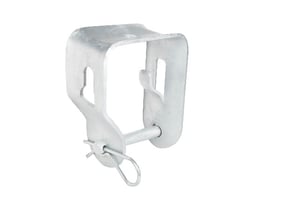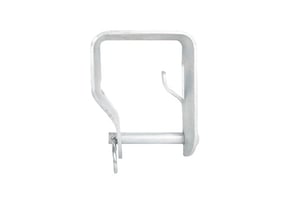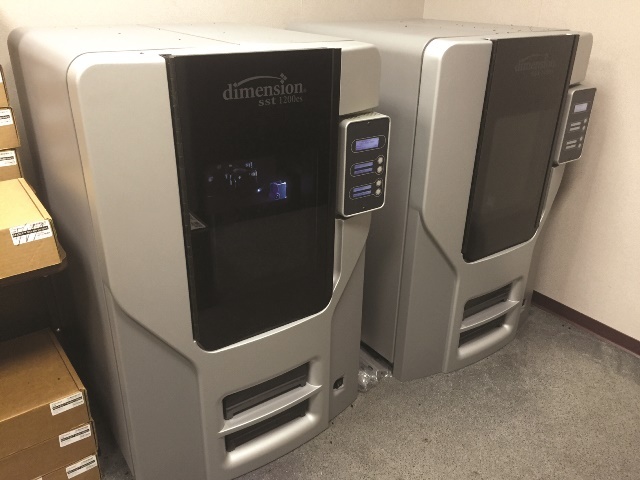Four years, several prototypes and thousands of installations later, Hubbell has satisfied Alliant Energy’s need for a stronger neutral clevis.
BROKEN NEUTRALS
Alliant Energy identified the need for a better neutral clevis more than a decade ago. Their distribution system has an under-hung neutral and some neutral conductors were attached to poles with vertically mounted clevises. In other words, the neutral was held to the side of the vertically-oriented, spool insulator by a steel tie wire.
In other parts of the country, this is considered standard practice and does not cause any problems, but within certain parts of Alliant Energy’s service territory, it was an issue. Repeated wind and ice loading damaged the neutral wire.
Over time, the weight of ice on the neutral caused the tie wires to stretch. When this happened, the neutral could come in contact with the bottom steel leg of the clevis. Moved by the wind, it would rub against the sharp edge of the clevis.
It was not unusual for line crews to be called out, only to find the neutral had been worn through and was lying on the ground. In the northern part of Alliant Energy’s territory, where galloping lines are not uncommon, roughly 90% of the neutrals had damage from being pulled down and rubbing against the edge of the clevis.
Horizontally oriented neutral clevises were hard to find, so Alliant looked for a stronger spool upset bolt. At that time, spool insulators were designed to fit over a standard 5/8" upset bolt. They wanted to upgrade to a 3/4” bolt, so the current standard wasn't a feasible option.
THE REDESIGN IN 3D
It became clear they needed a modified clevis which did not exist.
Jon Wilson, Engineering Manager for New Products, Hubbell Power Systems, explains, “At the end of 2011, we heard that Alliant Energy needed a modified version of one of our existing clevises. The orientation needed to be rotated 90 degrees and it wasn’t going to work exactly like our current clevis did. Also, there needed to be enough room between the side of the clevis and the pole to be able to insert the cotter pin in the end of the upset pin. We got to work on the design.”
The evaluation and fitment process was expedited through the use of 3D printing. Hubbell has two 3D printers that are used to make models/prototypes of parts. “We can print something in a day and send it out the next day for review. We also use the printers to make marketing samples and we can create miniature versions of different assemblies and parts. This is useful because it provides a good representation of what we have and our sales people don’t have to carry a 100 pound part around with them,” continues Wilson.
Since the 3D printers can create parts about 12" x 12" x 15", Hubbell was able to send full-size sample clevises, made from acrylic, to Alliant Energy for evaluation. This saved time and money, since expensive dies did not have to be fabricated to make steel prototypes.
“The changes weren’t that big and we quickly sent out a sales drawing and made 3-D print for them. A few rounds of back-and-forth and we had a new clevis for production,” explains Wilson.
Version 3 — Nov. 2015: As Version 2 was being installed, one of the Alliant line mechanics commented that it takes three hands to install the clevis -- one to hold the wire and two to install the spool insulator. This was inconvenient and time consuming, so we looked at ways to provide a separate hook that could be attached to the clevis temporarily. But, this added a part and made installation more complicated. Sometime later, another line mechanic suggested that we just push in part of the frame to make the hook to hold the neutral during installation and that is what we ended up doing.
In April of 2015, Alliant Energy approved the third version. The clevis has a finger of steel pushed in on one side of the clevis that can be used to temporarily hold the conductor while the spool insulator is installed.
SATISFACTION
The redesigned clevis is somewhat more expensive than a standard neutral clevis, but Alliant Energy is confident the initial cost will be offset by reduced maintenance, like line crew callouts due to neutral damage, and this is in addition to savings incurred by the increased speed and ease of installation.
It is important to not overlook the benefits during installation. Alliant Energy has over 40,000 miles of distribution lines and a substantially amount is replaced annually. While the redesigned clevis cannot be used in every application, Alliant reports they are a big improvement in the thousands of times where used.
As for the cost of the design work, there was a time investment, but Alliant Energy did not pay HPS for their work or the 3D models. “The work was performed strictly for an increase in the sale of parts,” says Wilson.
“Redesigning the neutral clevis was a fairly lengthy process, but it was satisfying. It is nice when you can help a customer who has a particular problem. Getting [3D] prints out to them, gathering feedback, delivering a finished product, and having the customer be happy with the final design, is rewarding. Hubbell saw this as an opportunity to improve a product and meet customer needs,” points out Wilson.
Further, while HPS began this project expecting to only sell the redesigned clevis to Alliant Energy, the appeal may be broader. “In the end, everyone saw how successful this project was and that the new clevis might be of interest to other utilities. We plan to bring the new design to the attention of other customers; they could have use for this as well,” Wilson points out.
Alliant Energy is also pleased with the process. They shared, "We have to give a lot of credit to the Hubbell representatives who took our suggestions back to the factory engineering departments. And, we have to credit the line crews in our company. They came to us when they had a problem and then offered valuable suggestions for an improvement. The best ideas came from Alliant Energy line crews, who work with these materials on a daily basis."


